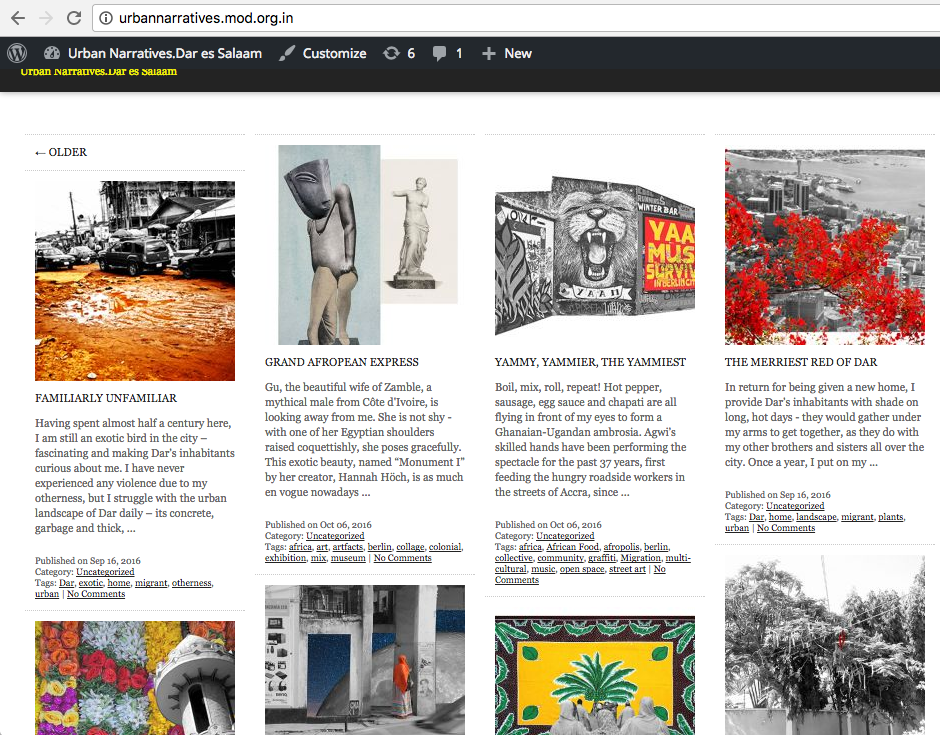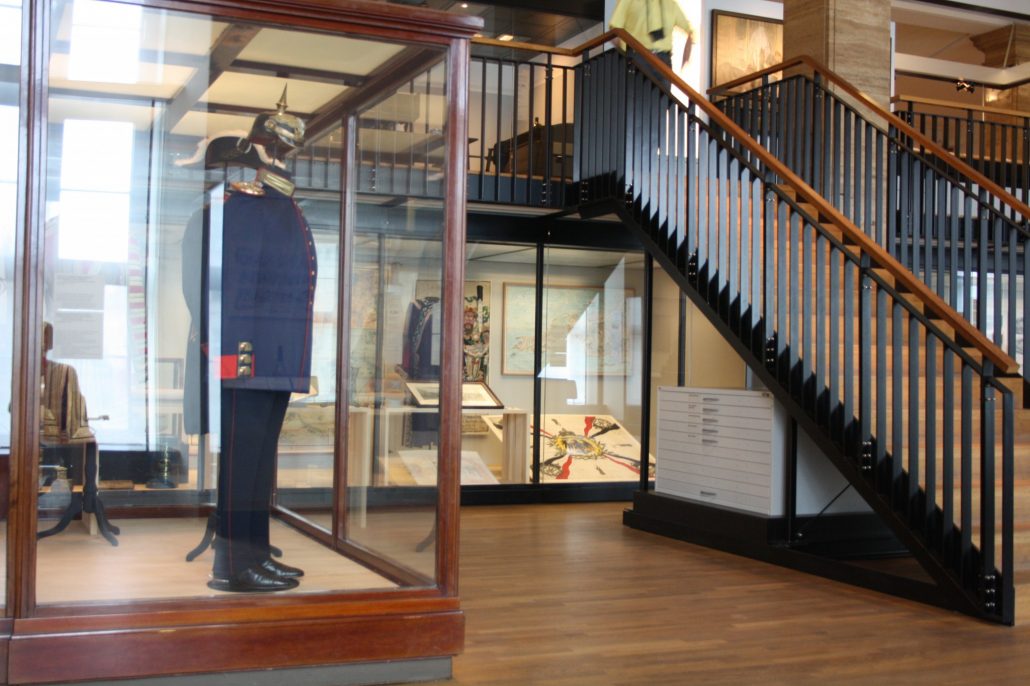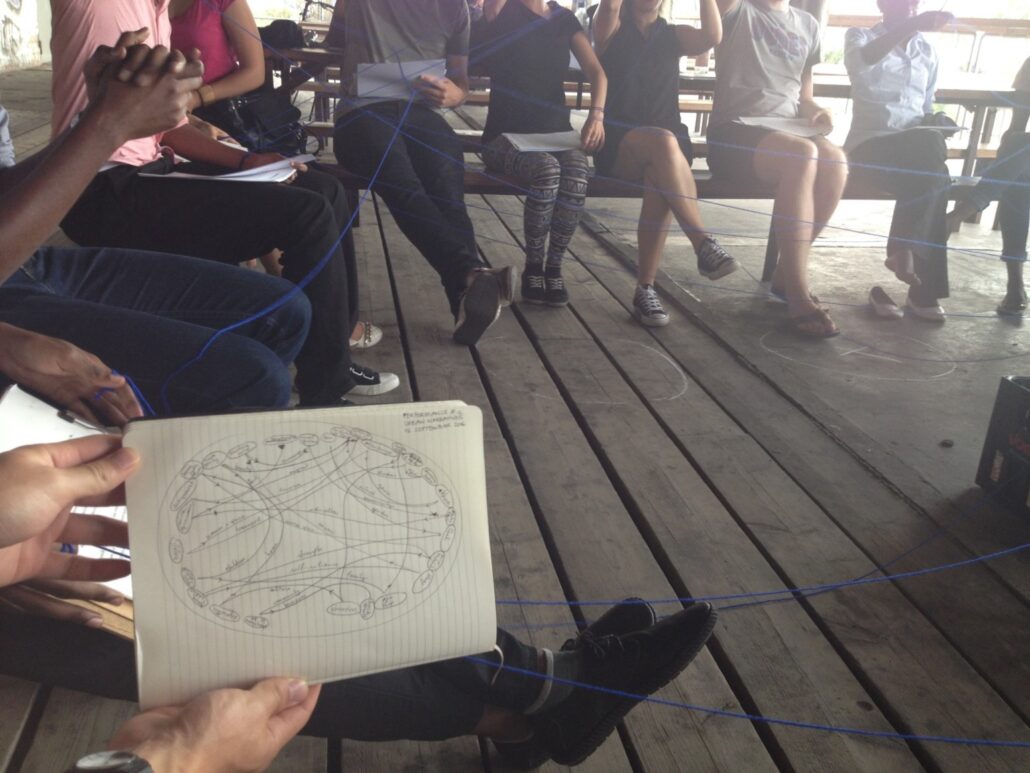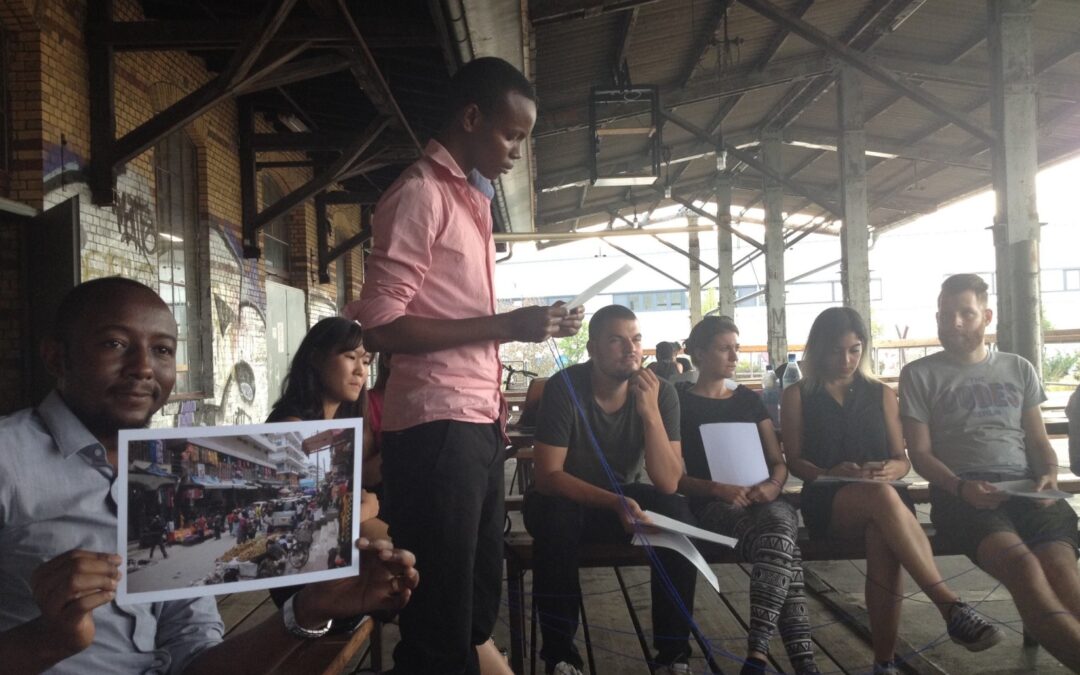WEEK 3 – ARCHIVES AND MULTIPLE AUTHORSHIPS
Connecting narratives between Berlin and Dar
The final week of the summer school focused on exploring the bridges between narratives collected in Berlin and Dar. To begin with, were there interactions and potential comparative angles noticeable in the archive of narratives that we started constituting in March? After discussing this question and finding some definite links, it became necessary to find confirmation using qualitative analysis. We began a process of tagging and referencing all the research materials collected so far in order to get an overview of the existing connexions.

We began to archive our materials in an online platform, a simple database where stories can be attributed “tags” (including geotags) and categories, which allows to navigate between them either with a focused inquiry in mind or simply as a serendipitous exploration of the two cities.
Archives as repositories for different voices
In an effort to check what smaller-scale institutions could provide as sources of information for this research, an investigation of several places was undertaken (it was likely that they would host shared histories of urban growth and exchanges). Students visited the Friedrich Ebert settlement in Wedding, which is part of the Afrikanische Viertel and was built in 1930-1931 as a response to mass housing deficits in the capital city. Geared towards low-income, mostly immigrant populations, the building was designed by architect Bruno Taut and experimented with block plans, flat roofs while trying to ensure some quality of life –views of the Rehberge Park, for instance, in each of the 1,700 apartments.
Another group of students went on to explore further the community organisation visible in various shops in the Neukölln area, wondering this time if the transnational art center Werkstatt der Kulturen was seen as a cultural landmark for African migrants. Ironically located on Wissmannstraße, the Werkstatt focuses on non-Western contemporary art and provides spaces for events, exhibitions, workshops, etc.
Other inquiries looked at Treptower Park and the story of the Colonial Exhibition, its impact on urban planning and migration patterns, and current activism on the question of memorials, human zoos, and postcolonial contexts in Germany.
One group also considered the story of Mohrenstraße, which is sometimes deceptively spelled “Möhrenstraße”, no longer standing for “moor street” but “carrot street”. It used to be the bigger commercial street of Berlin during the first decades of the 20th century. Some products, which used to be direct imports from the colonies such as Sarotti chocolates, still bear the aesthetics of colonial impositions (see picture in the previous post about the summer school).

The colonial history display at the Deutscher Historische Museum (before 2016). Photo by afrikawissenschaft.wordpress.com
Finally, the question of how bigger museums approach the question was also of great interest. It turned out, for instance, that for a long time the Deustche Historische Museum has had an extremely limited display concerning colonial history –German colonialism hidden away under the stairs, criticises this article. Until now, only obscure fragments were shown in the national museum –partly because most of the colonial collections, including objects, artefacts, human remains– were kept in the Dahlem Ethnographic museum, difficult to access and poorly exhibited. However, the first ever exhibition on German colonial history has now opened at the Historical Museum. We will enquire soon! More explanations on the happenings of the Ethnographic Museum collections can be found on the Humboltd Lab website.
Final performance

Once all stories and materials were tagged, uploaded and edited, we decided to perform these narratives for our final afternoon. Each student came with stories they had written, and from one starting point, we simply followed the threads and linkages from one place to another, from Dar to Berlin and back –and most importantly, Dar in Berlin and Berlin in Dar started to appear when tags like “education”, “bodies”, “home”, “community” were called.

